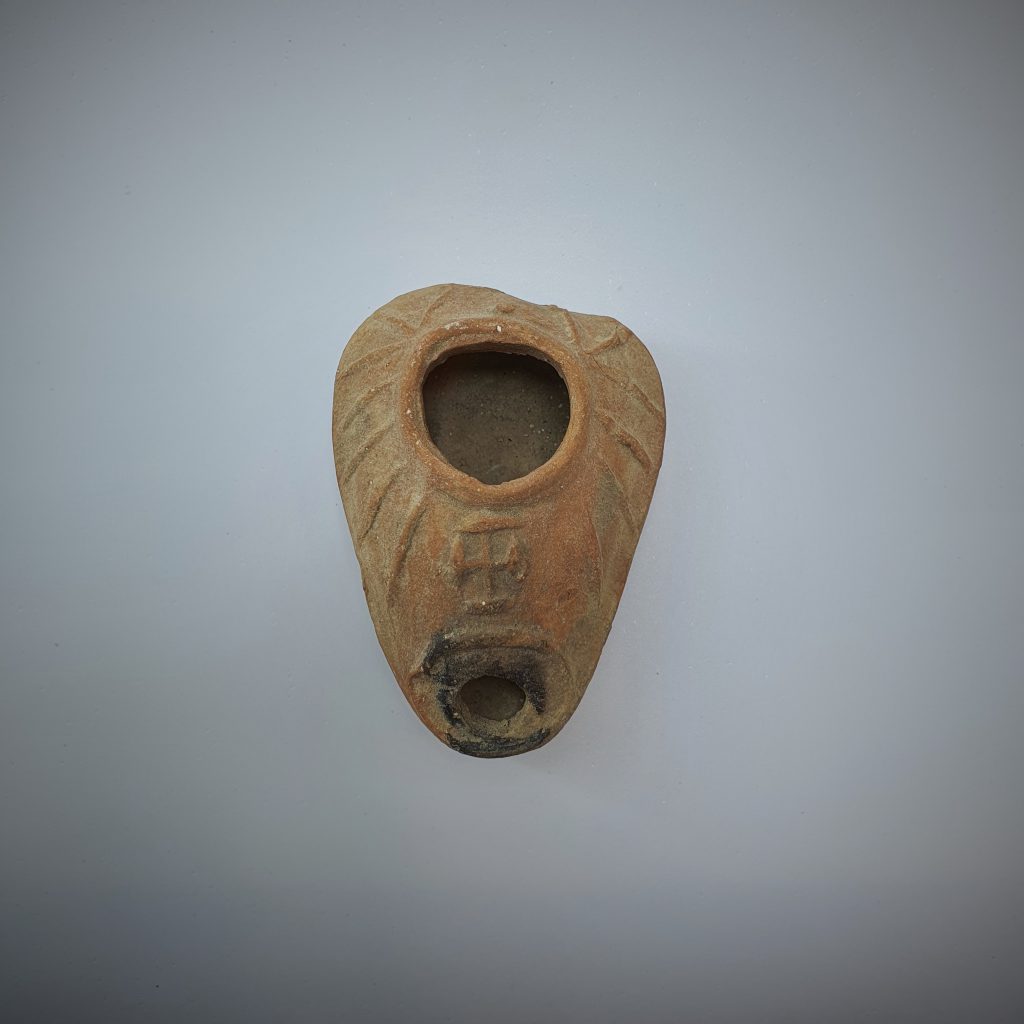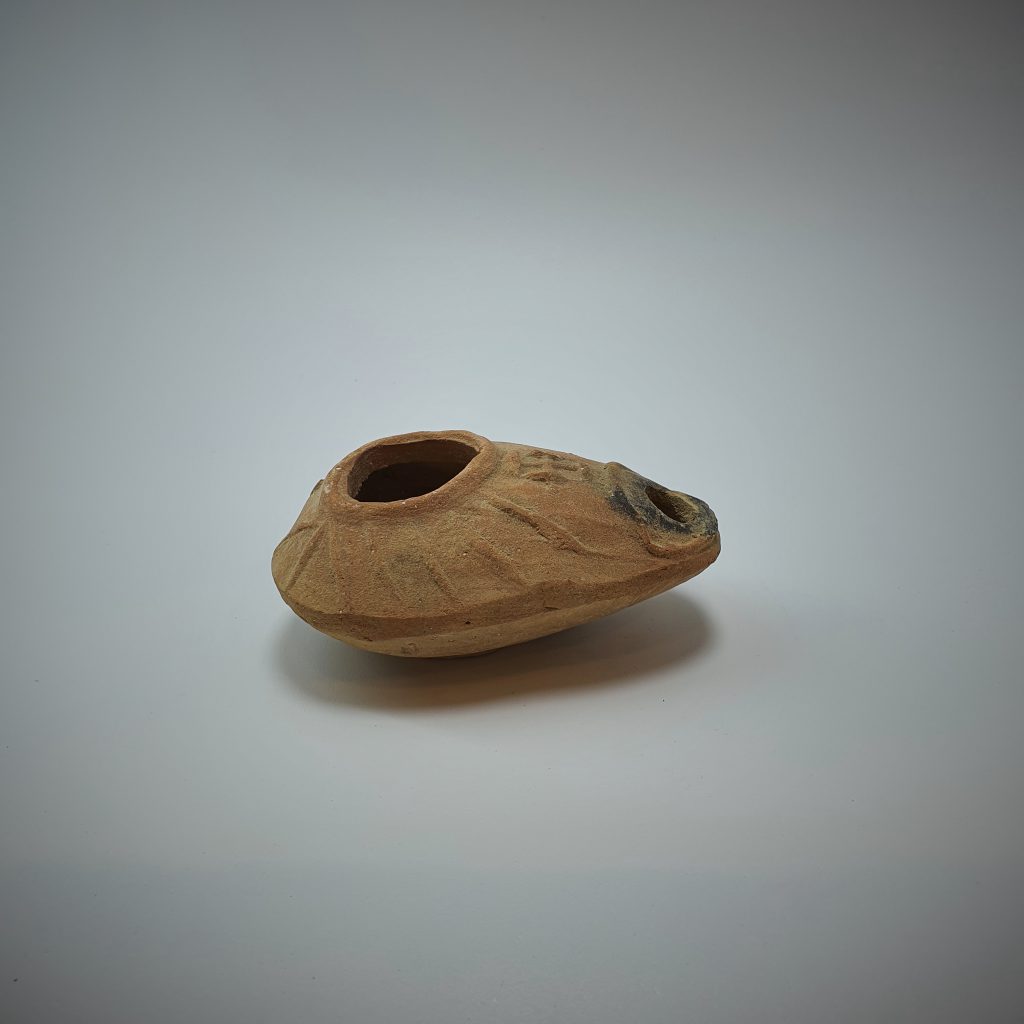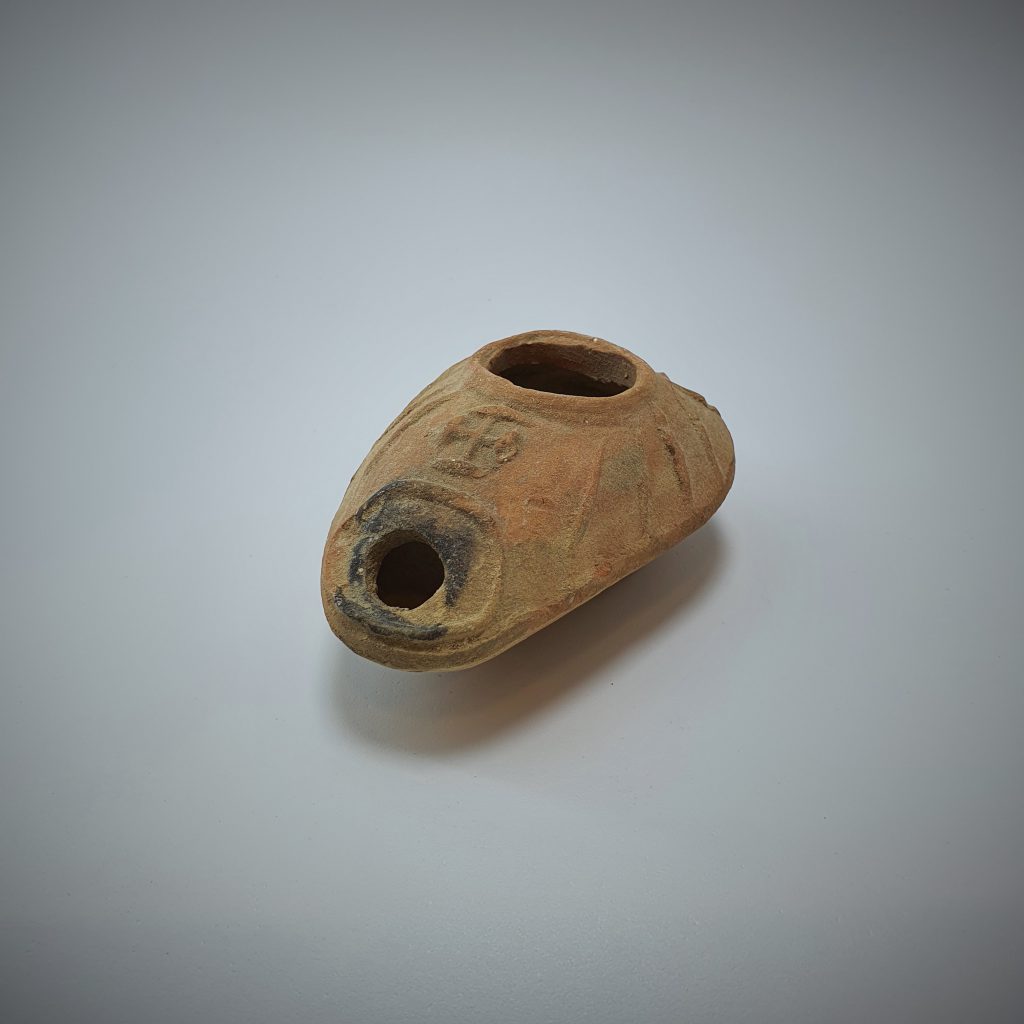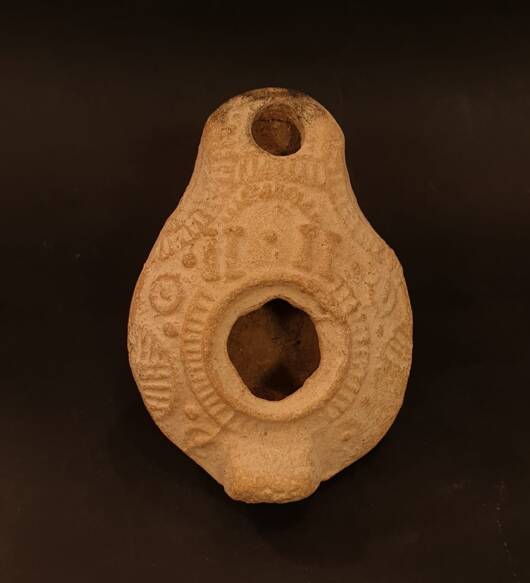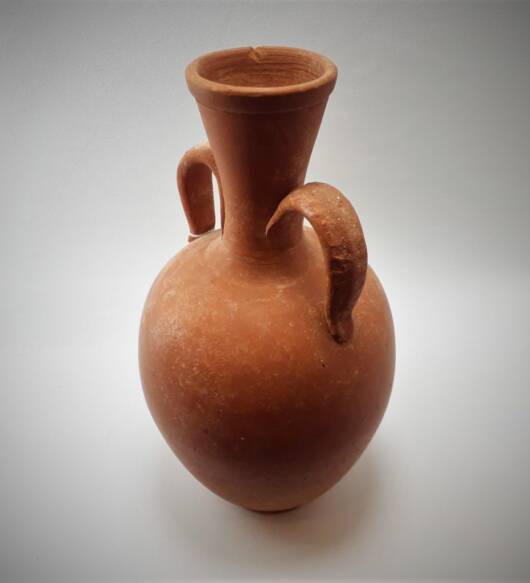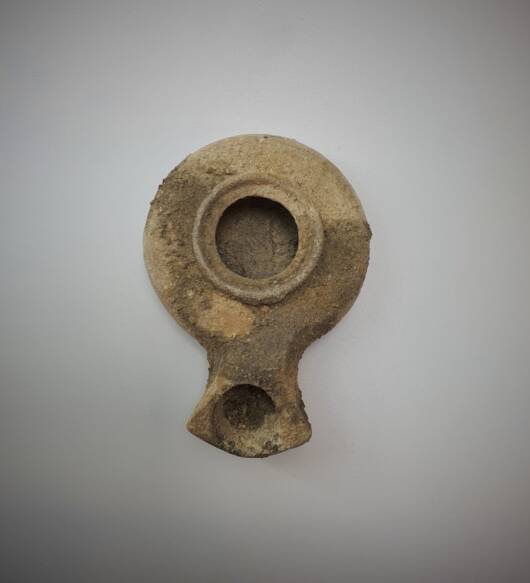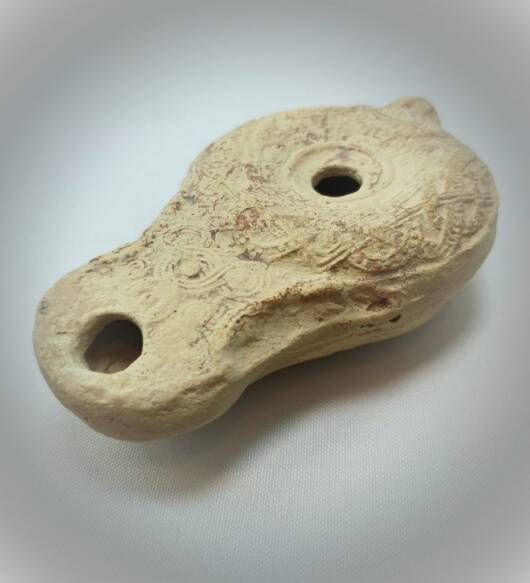Byzantine Slipper Oil Lamp
$350.00
Description
Description
Ancient Byzantine terracotta Slipper oil lamp decorated with a Cross
4th/5th Century AD.
Pear shaped, rim around wick hole, linear band around shoulders, and a Cross on nozzle, Ring base
In very good condition intact
BYZ.I Small candlestick lamps in these pear shape lamps, the nozzle is part of the body and is usually marked with a
rim or line.
The decoration is uniform, consisting a linear band around the shoulders and a single motif on the nozzle. This motif can be a cross, volute, palm branch or amphora. Another common motif is a candlestick, which is sometimes referred to as a palm branch or a Menorah
design (sometimes this type is called “Menorah design lamps”).
The handle is marked with a small dot and the lamp has a ring base.
The candlestick lamps are common mainly in Jerusalem and Judea but are also found in other parts of Israel.
The small candlestick lamps are dated from the second half of the fourth cent. to the fifth cent. CE.
In the fourth century AD Palestinian lamas underwent an innovation that went far beyond the Byzantine period – slipper-lamps made their appearance.
The term is rather curious and perhaps seasoned with a touch of British humour (it was the British who first coined the phrase
”slipper oil-lamps”), but aptly indicates both their Elongated, almond shape body and their rather humble aspect.
Cinderella aspect.
In the Hellenistic-Roman period the distinguishing features of terracotta lamps were the circular oil container and the stylistically distinct nozzleThe Byzantine innovation was to consider the nozzle as an integral part of the central body, so that the lamp as a whole assumed an almond shape.
The conceptual unity of nozzle and infundibulum became even stronger when a stylistic evolution led to the raised edges round both elements being physically joined by a central ridge, or later still, by a channel.
The upper and lower parts were moulded separately and then joined together by hand.
In most cases the join between the two pieces formed a slight ridge round the body of the lamp.
The base usually had the form of a low ring.


